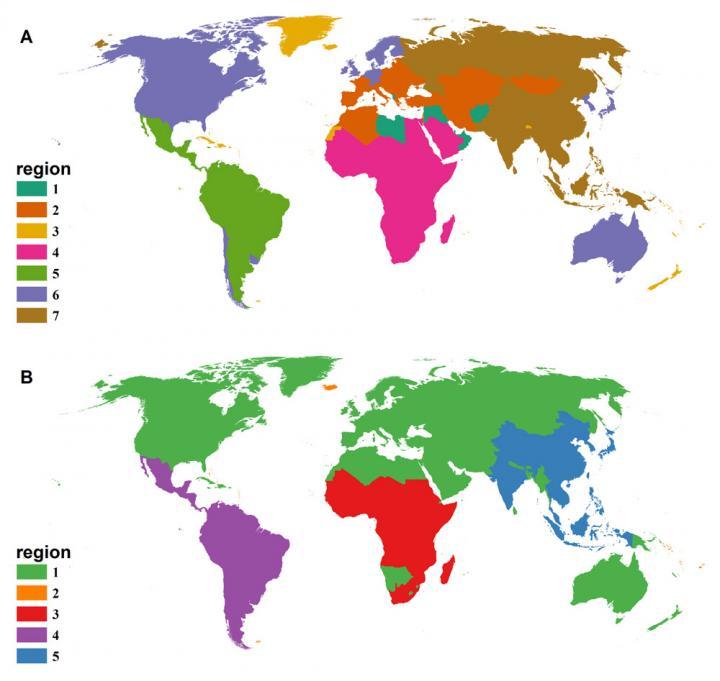Researchers at North Carolina State University have for the first time mapped human disease-causing pathogens, dividing the world into a number of regions where similar diseases occur.
The findings show that the world can be separated into seven regions for vectored human diseases - diseases that are spread by pests, like mosquito-borne malaria - and five regions for non-vectored diseases, like cholera.
Interestingly, not all of the regions are contiguous. The British Isles and many of its former colonies, such as the United States and Australia, have similar diseases and are classified in the same vectored and non-vectored regions. But Britain's former colonies in Africa and Asia contain different diseases and therefore are located in differing regions, suggesting that colonization is just one of a variety of factors, like climate and socio-political status, affecting the prevalence of disease in a specific area.

Maps reflect vectored human diseases (top) and non-vectored human diseases.
(Photo Credit: Michael Just, NC State University)
"This is about more than just the movement of people - climate, history and geography all seem to be important factors in how diseases survive and thrive across the globe," said Michael Just, an NC State Ph.D. student in plant and microbial biology and lead author of a paper describing the research. "Understanding that not all pathogens are everywhere could have consequences for public health and the global society as a whole."
The researchers examined the world's 229 countries for the presence or absence of 301 diseases - 93 vectored and 208 non-vectored. It found two more vectored-disease regions than non-vectored disease regions, which is likely due to the fact that the vectors - the pests that carry disease - sometimes have limited mobility. Think of a warm-weather pest that can't handle the cold, like the mosquito.
"Researchers have mapped humans, animals and plants and their movement and evolution across the globe, but the things that live on or with us - pests and pathogens, for example - have been largely ignored," Just said. "This study is a good first step in examining the relationship between people and their pathogens, which could have important human health implications."
Source: North Carolina State University